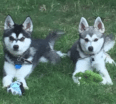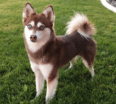Glucosamine for Dogs: Yay or Nay?
Just like us, dogs tend to slow down as they get older. Part of it is that they just don’t have the boundless energy they had as puppies, but underlying health issues can also play a role.
Whether your dog suffers from arthritis, joint pain, or reduced cartilage, glucosamine may be just what your pup needs to get back to her energetic self.
What Is Glucosamine?
Glucosamine is a natural compound found in your pet’s body, with the highest concentration in healthy cartilage. It plays a key role in producing glycosaminoglycan, a substance that helps build and repair tissues like cartilage.
But as dogs age, this natural repair process starts to slow down, leading to stiffness and joint discomfort. Over time, this can result in arthritis, as the cartilage isn’t being replenished as quickly as it once was.
Glucosamine for Dogs: What Does It Help Treat?
While glucosamine is best known for helping with arthritis, it can also help with other joint-related issues. For example:
- Dogs recovering from joint surgery may heal faster with glucosamine
- It can help ease pain caused by structural issues or hip dysplasia
- Dogs with spinal disc injuries may heal better with glucosamine
It’s important to note, however, that it’s not actually a painkiller. Rather, glucosamine works by reducing inflammation, which in turn, helps ease joint discomfort.
It also encourages your dog’s body to produce more natural joint lubrication, improving cushioning and mobility.
Some studies even suggest that glucosamine may reduce or eliminate the need for nonsteroidal anti-inflammatory drugs (NSAIDs), depending on the condition.
Where Does Glucosamine Come From?
Glucosamine supplements typically come in two forms: glucosamine sulfate and glucosamine hydrochloride. Sometimes, it’s also paired with chondroitin sulfate, a natural compound that helps cartilage hold onto moisture, keeping joints cushioned and flexible.
Most glucosamine supplements are derived from the shells of shrimp, oysters, or crabs, though there are also vegetarian options made in labs. Chondroitin, on the other hand, is usually sourced from cow or shark cartilage.
Just keep in mind that glucosamine is classified as a dietary supplement, not a drug, so it doesn’t undergo the same strict FDA testing. That’s why it’s so important to do your research before picking a product for your pup—not all of them are made equal.
Glucosamine For Dogs: Does It Really Help With Joint Pain?
Glucosamine for Dogs: What Are the Side Effects?
Glucosamine has minimal side effects, which is why it’s often recommended for aging dogs. Still, there are a few potential side effects to keep in mind. These include:
- Insomnia
- Fatigue
- Allergies (especially if your dog has a shellfish allergy)
- Excessive urination or thirst
- High blood sugar (which may be a concern for diabetic dogs since glucosamine is sugar-based)
How Can I Buy Glucosamine for My Pet?
The good news is glucosamine comes in a variety of forms, from chewables to liquids so you can find the one that works best for your dog. You can find these supplements at your vet’s office, pet supply stores, or online.
Just remember—never give your dog glucosamine that’s made for humans. The dosage and ingredients may not be safe, depending on the product.
When Will I See a Difference?
Most dogs only need one dose of glucosamine a day. As with human supplements, the effects aren’t instant—it may take a few weeks before you see a noticeable improvement in your pup’s mobility and comfort.




















